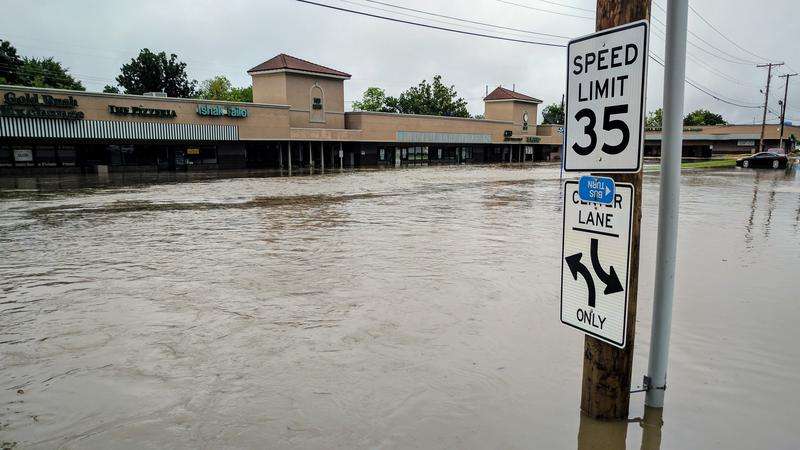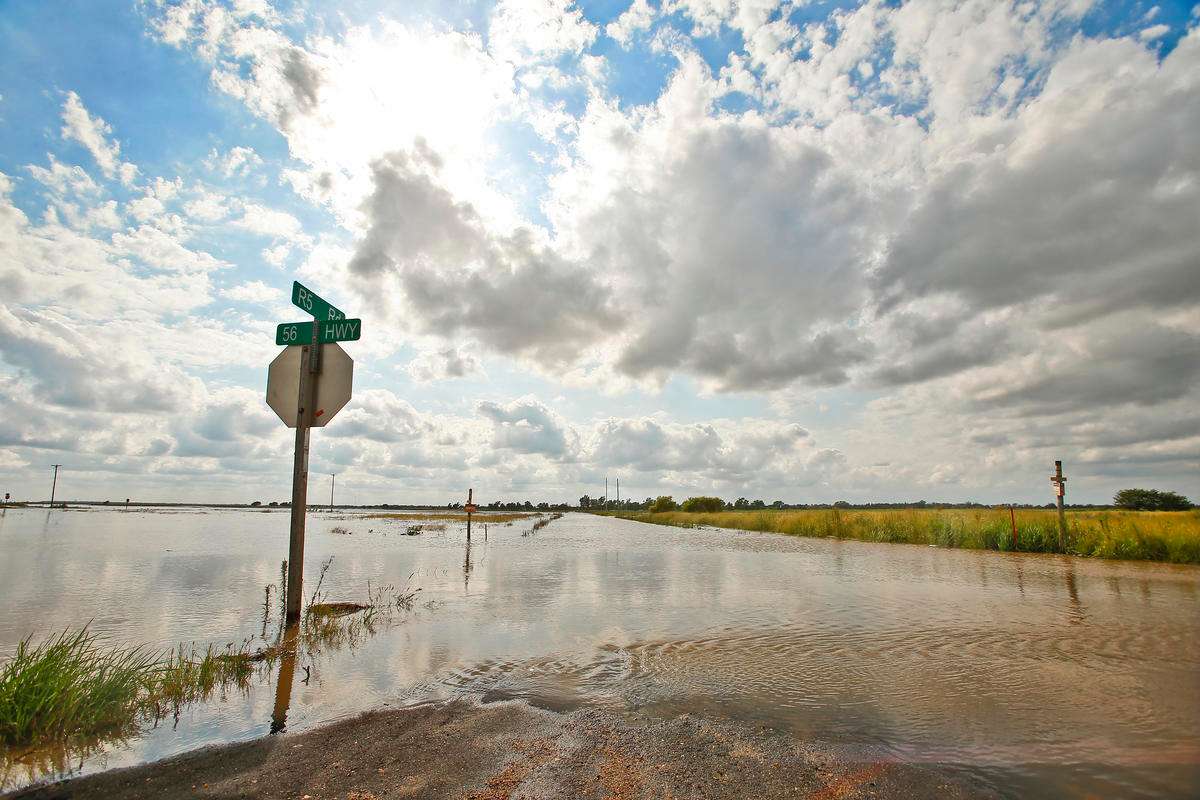
By BRIAN GRIMMETT, Kansas News Service
WICHITA, Kansas — Floods, tornadoes and other natural disasters raked across the plains of Kansas long before this latest pandemic swirled invisibly around the globe.
And no amount of hunkering down in this #AloneTogether period will ward off storm systems or the chaos they rain down.
To deal with that reality in this year of COVID-19, emergency response managers at the federal, state and county levels are retooling how they’ll act when disaster strikes.
Help that would have been just a few key phone calls and emails away is busy dealing with its own problems in response to a crisis likely to linger at least for months.
That leaves the people paid to help communities brace for a deluge or recover from a twister more isolated. Not only do they have to deal with the new coronavirus that’s upended the world, but with the periodic disasters they're accustomed to preparing for.
While responders might be skilled in building a barrier out of sandbags or setting up temporary shelters for people with no place to go, making sure those shelters aren’t a perfect place for the virus to spread is a whole new challenge.
“I’m not sure we’ve ever trained for something just like this,” said Josh Murray, regional communications director for the American Red Cross. “Hopefully, we don’t have any storms or major disasters that we have to deal with right away. But we know that that’s very possible and we’re doing everything we can to be ready.”

Virtual Preparedness
The Army Corps of Engineers’ regional offices in Kansas City have a ghost town feel these days. Like so many Kansans, the federal workers at the massive agency work from home, preparing, as usual, for the worst.
“The main thing right now is keeping our employees, our staff, healthy so if we do get into an event, we’re able to respond,” said Mike Dulin, an emergency management specialist with the Kansas City District of the Corps.
Across the Great Plains, that most likely means rivers busting from their banks and tornadoes ripping across the landscape.
Typical training sessions that in prior years would happen in person now take place virtually through meetings over the Zoom app and conference phone calls.
“If we do get into a flood event, I think a lot of folks are going to be familiar with that virtual support already because we’re doing it as part of our daily routine now,” Dulin said.
In the event of a disaster, the material goods such as sandbags for flood barriers and equipment to clean up after a tornado are already in place. The problem is getting those to the impacted areas and protecting the responders who have to show up, pandemic or not.
“How do I keep them healthy, how do I mitigate the risk for them and their family,” asked Maj. General Lee Tafanelli, the Kansas director of emergency management.
One way is through the use of personal protective equipment such as face masks and gloves. Yet those supplies are scarce enough at hospitals already.
Tafanelli said the state is also looking at the ways setting up shelters for people who have to evacuate or have lost their homes would be different.
In Atchison County in northeast Kansas, where the Missouri River burst its banks last year, emergency management officials said the best-case scenario is not needing to open any shelters.
“We don’t want to do that, but if there’s a necessity to do so then we would have to do it,” said Wes Lanter, director of emergency management for Atchison County.
But it’s hard to predict where shelters might be needed. In a major disaster, shelters play a key role in helping the displaced.

To prepare for a time when one might be needed, the Red Cross said it’s working on modifying how those shelters would operate. People would likely be screened before being allowed in and an isolation area would be set up for people exhibiting symptoms of the coronavirus.
There’d be precautions taken inside the shelter, too.
“That may be spreading the beds farther apart,” said the Red Cross’ Murray. “That may be staggering meal times so people aren’t all sitting at a table at the same time.”
He said it’s likely county officials would need to find multiple locations for shelters as separation guidelines would mean fewer people could be housed in each one.
Finding and training volunteers would also be a challenge.
The Red Cross often gets supplies and volunteers from outside of the disaster area. But right now, the first disaster is coronavirus, and that’s impacting people nationwide. People who would normally travel to help out after a tornado, flood, or hurricane won’t be available.
Murray said even though the Red Cross and many of its volunteers are experienced at responding to disasters, this is unlike anything he’s ever seen.
“It would be a new experience,” he said, “and something that we’d have to do a lot of training and really go over how this is going to work.”
Brian Grimmett reports on the environment, energy and natural resources for KMUW in Wichita and the Kansas News Service. You can follow him on Twitter @briangrimmett or email him at [email protected].



